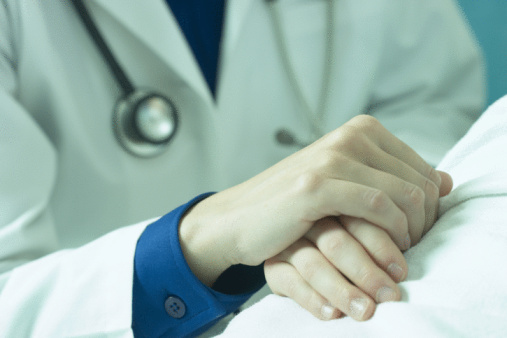Patient Bedside Remains Important Component of Medical Student Education
A new web-based tool aimed at improving experiential learning for medical students has shown that learning occurs in patient rooms and in other areas within the hospital, including physician computer workstations.
Developed by faculty clinicians at BU School of Medicine (BUSM) and Boston Medical Center (BMC), “Learning Moment” allows students to electronically log their learning experiences and share them with their peers. The tool provides an organized way for students to reflect on their learning experiences, which is a critical component of lifelong learning that is sometimes lacking in clinical learning environments.
Learning Moment, which was piloted among third- and fourth-year medical students rotating through BMC’s emergency department, uses data capture to track precisely where learning experiences take place (for example at the bedside or the physician workstation).

“We hope that our study will highlight the potential of Learning Moment as a tool to foster experiential learning by encouraging reflective observation during practice,” said lead author Alexander Sheng, MD, BUSM assistant professor of emergency medicine and an emergency medicine physician at BMC. “The data from Learning Moment has the potential to help educators better understand the intricacies of local learning microenvironments as well as the broader clinical learning ecosystem.”
With the increasing administrative demands on providers, the study authors noted that the bedside teaching model is thought to have declined in recent years. They hypothesized that most of the learning experiences reported by students would occur away from the patient bedside.
Surprisingly, they discovered that the majority of learning moments logged in their study still took place in patient rooms, although there were some differences between students planning for a career in emergency medicine and those who intended to pursue other specialties.
Specifically, researchers found that students who planned to pursue training in emergency medicine reported that while most of their learning moments occurred in patient rooms, a large proportion also took place at workstations, in resuscitation rooms and other areas. Conversely, for non-emergency medicine-bound students, a large majority of learning moments occurred in patient rooms, with a much smaller percentage taking place in other areas such as at workstations.
The authors concluded that the bedside remains an important component of medical education for students entering multiple specialties, despite a reported decline in this teaching modality.
Regardless of the location of learning moments, the creators of the web-based tool hope that it will help optimize experiential learning, and that will be adapted to a variety of clinical departments and institutions.
The study based on the initial implementation of this program is published online in the Western Journal of Emergency Medicine.
View all posts